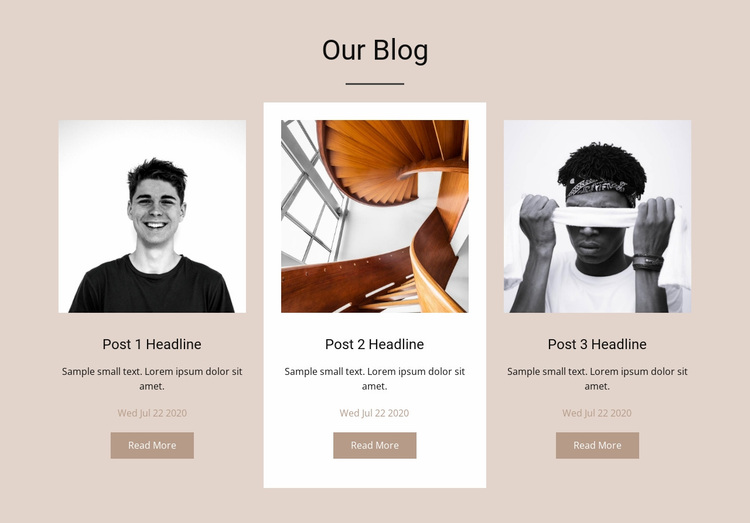Top Tips for Creating an Impactful Internet Site Layout That Transforms
To accomplish this, one need to think about a range of elements, consisting of understanding the target audience, focusing on individual experience, and optimizing for mobile systems. The strategic usage of engaging call-to-actions and a distinct visual hierarchy plays a crucial duty in assisting customers with their trip.

Understand Your Target Audience
Recognizing your target market is fundamental to effective web site style, as it lays the groundwork for creating an appealing user experience. Recognizing who your customers are, including their demographics, preferences, and habits, makes it possible for developers to tailor the internet site's material, design, and performance to satisfy certain needs.
Conducting extensive market research is essential in this process. Surveys, meetings, and analytics can offer beneficial insights right into individual assumptions and pain points. By compiling this information, designers can create user personas that represent various segments of the target market, ensuring that design choices are educated and relevant.
Moreover, understanding the target audience assists in selecting suitable layout components such as color design, typography, and images that reverberate with customers. A site that speaks straight to its target market promotes a feeling of link and depend on, encouraging longer brows through and greater conversion prices.
Ultimately, a user-centered approach to internet site layout not just improves user contentment however additionally sustains organization objectives by driving involvement and commitment. By prioritizing the demands and choices of the target market, a web site can successfully offer its purpose and achieve desired end results.
Prioritize Individual Experience
To enhance the general efficiency of a site, prioritizing user experience (UX) is necessary (Website Design). A well-designed UX makes sure that site visitors can browse the website easily, locate information swiftly, and engage with content meaningfully. This results in increased customer contentment and greater conversion rates
Begin by executing instinctive navigating. Menus should be realistically structured, allowing users to situate essential locations of the site with very little initiative. Consistency in style aspects, such as color pattern and font styles, fosters knowledge, which is important for keeping user interaction.
Additionally, consider the packing rate of your website. A delay of simply a few seconds can bring about considerable drop-offs, as customers are less most likely to wait for a slow-loading web page. Improving pictures and enhancing code can boost performance and preserve site visitors.
Furthermore, quality in material presentation is essential. Use concise, appealing language and damage up text with visuals to boost readability. By focusing on user experience, you not only create a more pleasurable atmosphere for site visitors however likewise enhance your brand name's trustworthiness. Eventually, a focus on UX is a financial investment in the long-term success of your website.
Optimize for Mobile Gadgets
Enhancing for mobile phones is vital in today's electronic landscape, where a boosting number of customers gain access to sites via smartphones and tablet computers. A mobile-friendly layout not only enhances user experience but additionally plays a significant duty in enhancing internet search engine positions. To attain this, it is essential to take on a receptive design that instantly readjusts to numerous display sizes and positionings.

Loading rate is an additional important element; mobile customers are typically much less person and expect fast access to details. Enhance pictures and utilize internet browser caching to boost efficiency. Ultimately, test your web site on several devices and screen resolutions to identify and remedy any type of possible use concerns. By focusing on mobile optimization, you make sure that your site stays competitive and effectively engages a more comprehensive audience.
Usage Compelling Call-to-Actions
A site's performance commonly rests on its capability to assist site visitors towards preferred actions, making compelling call-to-actions (CTAs) necessary components of design. CTAs act as the pivotal factors that guide individuals to involve with the website, whether that implies buying, authorizing up for a newsletter, or downloading and install a resource.
To develop reliable CTAs, quality is critical. Use concise language that clearly communicates the activity you want the user to take. Expressions such as "Get going," "Authorize Up Free," or "Shop Now" not just convey urgency however also remove ambiguity. The placement of CTAs is just as important; they ought to be strategically placed throughout the page to ensure they are easily noticeable, specifically in high-traffic locations.
In addition, the design of CTAs ought to stand out without being noticeable. Utilize contrasting shades and clear font styles to guarantee they capture interest. In addition, think about making use of directional signs, such as arrowheads or images, to direct users toward these switches. By focusing on these components, organizations can considerably improve customer engagement, driving conversions and eventually achieving their site's objectives.
Emphasis on Visual Pecking Order
Effective site style relies greatly on a well-structured aesthetic power structure that guides why not try this out individuals through web content flawlessly. By arranging elements in a manner that focuses on info, designers can enhance user experience and assist in decision-making. This entails using dimension, shade, contrast, and spacing tactically to attract focus to the most important components of a webpage.
The usage of bigger fonts for headings and subheadings develops a clear distinction between various sections, enabling individuals to scan material effortlessly. Furthermore, using contrasting shades for buttons and calls-to-action can record individual attention and motivate interaction. Whitespace is one more necessary element; it prevents mess and enables individuals to concentrate on crucial messages without distractions.
Photos and graphics need to enhance the text while likewise adhering to the recognized pecking order, enhancing the overall message (Website Design). Uniformity in layout aspects, such as shade systems and typography, further strengthens the visual hierarchy, making navigating user-friendly

Conclusion
In verdict, effective internet site style requires a detailed understanding of the target audience, prioritization of customer experience, and mobile optimization. Inevitably, a well-executed internet site style serves as an essential part in driving customer actions and attaining business purposes.